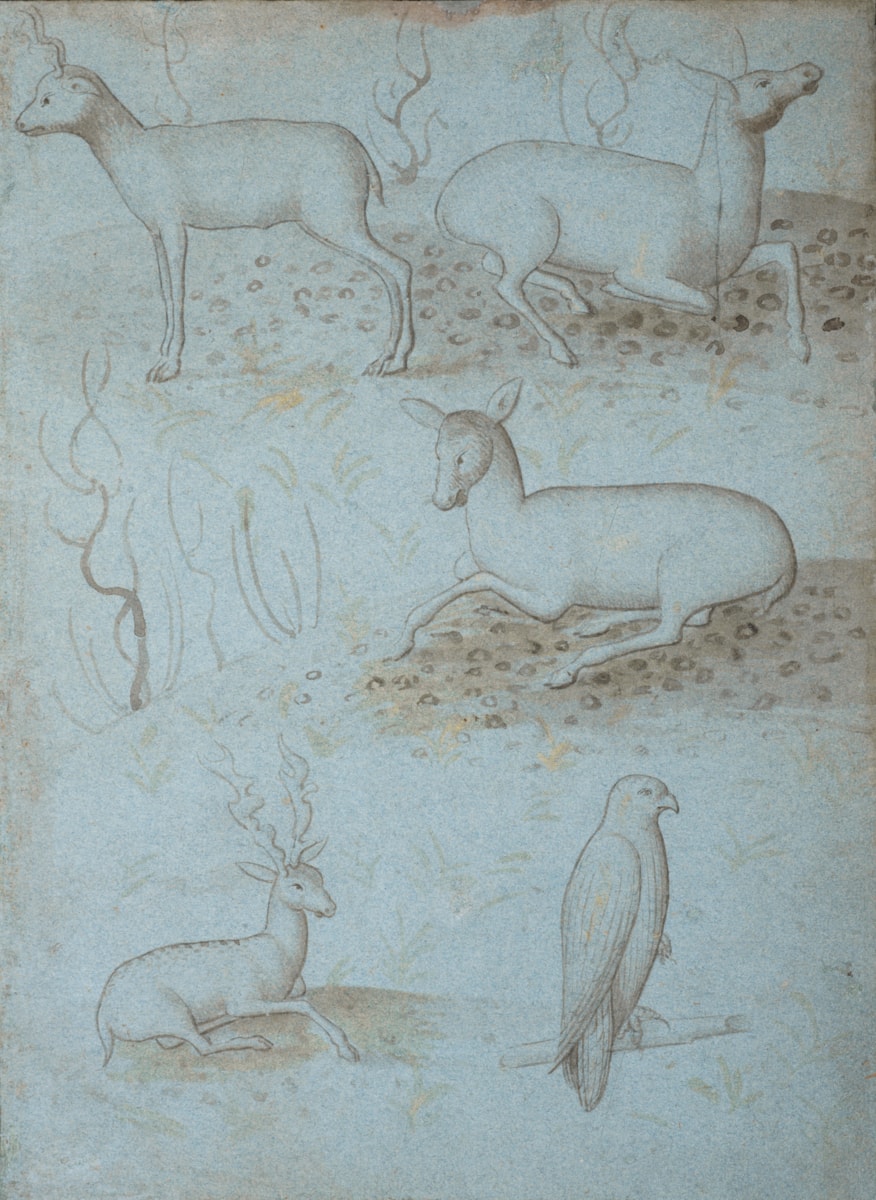
North Italian School, c. 1490
A sheet from a model book with four studies of deer and a falcon
Description:
point of the brush and brown ink, brown wash, heightened with brownish-yellow wash, on blue paper
280 x 205 mm
Provenance:
Sotheby’s, London: 13 December 2001, Lot 99
Jan Krugier (1928–2008), Geneva
his sale, Sotheby’s, New York: 28 January 2015, Lot 9
with Les Enluminures, New York, 2018
Ernst Böhlen (1935-2022), Bern, (MS 1440)
Literature
G. Verdigel, Bartolomeo & Benedetto Montagna and the Role of The Graphic Arts in Vicenza c. 1480-1520, PhD Thesis, London, 2020, p. 67, p. 313, p. 350, no. 2.8
Note:
This sheet, which is thought to originate either from the Veneto or Lombardy, demonstrates a number of elements characteristic of the late Gothic model book, which functioned to preserve images of stock forms for use in a workshop or by successive generations. Although its author remains unknown, the drawing is cited by Verdigel as an example of the type likely used in the Montagna workshop in Vicenza towards the end of the fifteenth century. The studies here depict deer and stags in various poses set on articulated grounds, a falcon perched on a stick, and antlers of various forms. The blue of the paper extends the tonal range that the artist was able to achieve through the use of coloured washes.
The most famous examples of such model books are those by Giovanni dei Grassi (Bergamo, Biblioteca Civica, A. Mai Cassaf. 1.21) and Michelino del Besozzo (Rome, Instituto Nazionale per la Grafica, inv nos. F.N. 2833-62) (Scheller, cat. nos. 26 and 27). So preciously guarded were model books that a famous protracted lawsuit focuses on Jacquemart de Hesdin’s theft in the fourteenth century of some drawings of models from the painter Jan of Holland. Model books remained in use until the very end of the fifteenth century. The model book constitutes a distinct, sometimes overlapping category from the sketchbook, containing drawings after nature (e.g., examples by Pisanello, Stefano da Verona, among others).
The template-like quality of the present sheet suggests that it was executed after another work, rather than drawn from life. The focus on animals and birds echoes the subject matter of earlier Lombard and Venetian examples. See for example ff. 13v (falcon) and 14r in the Bergamo model book and in another anonymous Lombard example from c. 1400 which includes deer in similar poses (Venice, Galleria dell’ Accademia, sheet no. 7; Scheller, cat. no. 28).
We are grateful to Chris Fischer for his expertise.
